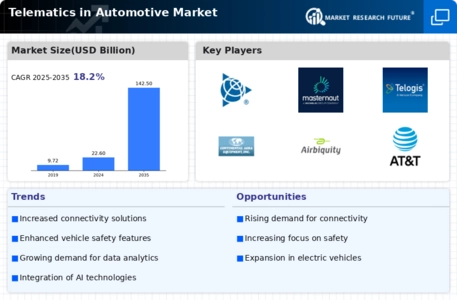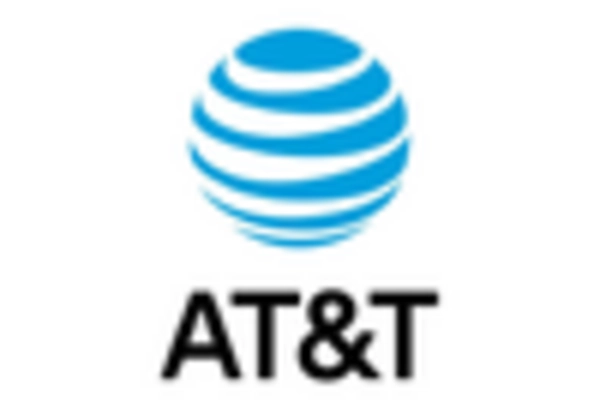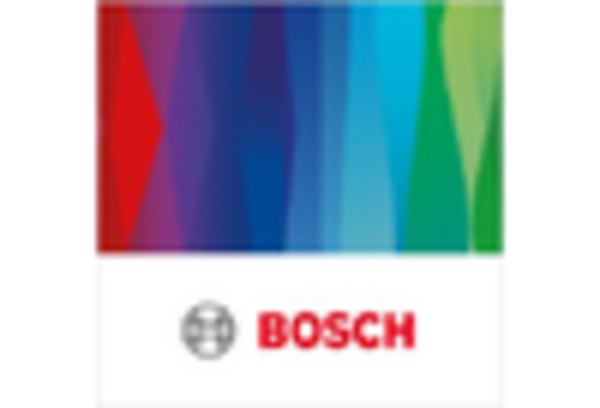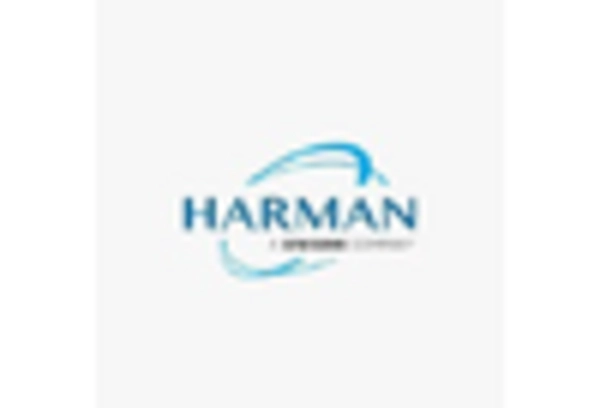-
Market, By Type\r\n5.1 Introduction\r\n5.2
-
Embedded\r\n5.2.1 Market Estimates & Forecast,
-
Market Estimates & Forecast by Region, 2024-2032\r\n5.4
-
Tethered\r\n5.4.1 Market Estimates & Forecast,
-
Market Estimates & Forecast, 2024-2032\r\n5.3.2
-
automotive Market, By Application\r\n
-
Introduction\r\n6.2 Vehicle Tracking\r\n6.2.1
-
Market Estimates & Forecast, 2024-2032\r\n6.2.2 Market Estimates
-
& Forecast by Region, 2024-2032\r\n6.3 Fleet Management\r\n6.3.1
-
Market Estimates & Forecast, 2024-2032\r\n6.3.2 Market Estimates
-
& Forecast by Region, 2024-2032\r\n6.4 Satellite Navigation\r\n6.4.1
-
Market Estimates & Forecast, 2024-2032\r\n6.4.2 Market Estimates
-
& Forecast by Region, 2024-2032\r\n6.5 Vehicle Safety
-
Communication\r\n6.5.1 Market Estimates & Forecast,
-
& Forecast, 2024-2032\r\n6.6.2 Market Estimates
-
& Forecast by Region, 2024-2032\r\n7 Global Telematics
-
in automotive Market, By Systems\r\n
-
Introduction\r\n7.2 Driving Assistance
-
systems\r\n7.2.1 Market Estimates & Forecast, 2024-2032\r\n7.2.2
-
Market Estimates & Forecast by Region, 2024-2032\r\n7.3
-
Telematics Control Unit\r\n7.3.1 Market Estimates
-
& Forecast, 2024-2032\r\n7.3.2 Market Estimates
-
& Forecast by Region, 2024-2032\r\n7.4 Global Positioning
-
System (GPS)\r\n7.4.1 Market Estimates & Forecast, 2024-2032\r\n7.4.2
-
Market Estimates & Forecast by Region, 2024-2032\r\n7.5
-
Vehicle Tracking Systems\r\n7.5.1 Market Estimates
-
& Forecast, 2024-2032\r\n7.5.2 Market Estimates
-
& Forecast by Region, 2024-2032\r\n7.6 Vehicular Emergency
-
Warning systems\r\n7.6.1 Market Estimates & Forecast,
-
& Forecast, 2024-2032\r\n7.7.2 Market Estimates
-
& Forecast by Region, 2024-2032\r\n \r\n8
-
Global Telematics in automotive Market, By Vehicle type\r\n8.1
-
Introduction\r\n8.2 Passenger Car\r\n8.2.1
-
Market Estimates & Forecast, 2024-2032\r\n8.2.2 Market Estimates
-
& Forecast by Region, 2024-2032\r\n8.3 Light commercial
-
vehicles\r\n8.3.1 Market Estimates & Forecast, 2024-2032\r\n8.3.2
-
Market Estimates & Forecast by Region, 2024-2032\r\n8.4
-
Heavy commercial vehicles\r\n8.4.1 Market Estimates
-
& Forecast, 2024-2032\r\n8.4.2 Market Estimates
-
& Forecast by Region, 2024-2032\r\n \r\n9
-
Global Telematics in automotive Market, By Distribution channel\r\n9.1
-
Introduction\r\n9.2 OEM\r\n9.2.1
-
Market Estimates & Forecast, 2024-2032\r\n9.2.2 Market Estimates
-
& Forecast by Region, 2024-2032\r\n9.3 Aftermarket\r\n9.3.1
-
Market Estimates & Forecast, 2024-2032\r\n9.3.2 Market Estimates
-
& Forecast by Region, 2024-2032\r\n \r\n10
-
Global Telematics in automotive Market, By Region\r\n10.1
-
Introduction\r\n10.2 North America\r\n10.2.1
-
Market Estimates & Forecast, 2024-2032\r\n10.2.2 Market Estimates
-
& Forecast by Type, 2024-2032\r\n10.2.3 Market Estimates
-
& Forecast by Application, 2024-2032\r\n10.2.4 Market Estimates
-
& Forecast by Systems, 2024-2032\r\n10.2.5 Market Estimates
-
& Forecast by Vehicle type, 2024-2032\r\n10.2.6 Market Estimates
-
& Forecast by Distribution channel, 2024-2032\r\n10.2.6 U.S.\r\n
-
& Forecast by Type, 2024-2032\r\n
-
Market Estimates & Forecast by Systems, 2024-2032\r\n
-
& Forecast by Vehicle type, 2024-2032\r\n
-
channel, 2024-2032\r\n10.2.7 Canada\r\n
-
& Forecast by Type, 2024-2032\r\n
-
Market Estimates & Forecast by Systems, 2024-2032\r\n
-
& Forecast by Vehicle type, 2024-2032\r\n
-
channel, 2024-2032\r\n10.3 Europe\r\n10.3.1
-
Market Estimates & Forecast, 2024-2032\r\n10.3.2 Market Estimates
-
& Forecast by Type, 2024-2032\r\n10.3.3 Market Estimates
-
& Forecast by Application, 2024-2032\r\n10.3.4 Market Estimates
-
& Forecast by Systems, 2024-2032\r\n10.3.5 Market Estimates
-
& Forecast by Vehicle type, 2024-2032\r\n10.3.6 Market Estimates
-
& Forecast by Distribution channel, 2024-2032\r\n10.3.7 Spain\r\n
-
Market Estimates & Forecast by Type, 2024-2032\r\n
-
by Systems, 2024-2032\r\n
-
by Distribution channel, 2024-2032 \r\n10.3.8 Germany\r\n
-
Market Estimates & Forecast by Type, 2024-2032\r\n
-
by Systems, 2024-2032\r\n
-
by Distribution channel, 2024-2032\r\n10.3.9 Rest of Europe\r\n
-
Market Estimates & Forecast by Type, 2024-2032\r\n
-
by Systems, 2024-2032\r\n
-
by Distribution channel, 2024-2032\r\n10.4 Asia Pacific\r\n
-
Market Estimates & Forecast by Type, 2024-2032\r\n
-
Forecast by Application, 2024-2032\r\n
-
Market Estimates & Forecast by Vehicle type, 2024-2032\r\n
-
Forecast by Distribution channel, 2024-2032 \r\n10.4.7
-
India\r\n 10.4.7.1
-
Market Estimates & Forecast, 2024-2032\r\n
-
Estimates & Forecast by Systems, 2024-2032\r\n
-
channel, 2024-2032\r\n10.4.8 Rest of Asia Pacific\r\n
-
Forecast, 2024-2032\r\n
-
Estimates & Forecast by Systems, 2024-2032\r\n
-
channel, 2024-2032\r\n10.5 Rest of the World\r\n
-
Estimates & Forecast by Application, 2024-2032\r\n
-
type, 2024-2032\r\n
-
Competitive Landscape\r\n12 Company Profile\r\n12.1
-
Trimble, Inc. (U.S.)\r\n12.1.1 Company Overview\r\n12.1.2
-
Products/Services Vehicle type\r\n12.1.3 Financial
-
Overview\r\n12.1.4 Key Developments\r\n12.1.5
-
Strategy\r\n12.1.6 SWOT Analysis\r\n12.2
-
Masternaut Limited (France)\r\n
-
Vehicle type\r\n12.2.3 Financial Overview\r\n12.2.4
-
Key Developments\r\n12.2.5 Strategy\r\n12.2.6
-
SWOT Analysis\r\n12.3 TomTom International B.V. (Netherlands)\r\n12.3.1
-
Company Overview\r\n12.3.2 Products/Services Vehicle type\r\n12.3.3
-
Financial Overview\r\n12.3.4 Key Developments\r\n12.3.5
-
Strategy\r\n12.3.6 SWOT Analysis\r\n12.4
-
Telogis (U.S.)\r\n
-
Vehicle type\r\n12.4.3 Financial Overview\r\n12.4.4
-
Key Developments\r\n12.4.5 Strategy\r\n12.4.6
-
SWOT Analysis\r\n12.5 Visteon Corporation (U.S.)\r\n
-
Products/Services Vehicle type\r\n12.5.3 Financial
-
Overview\r\n12.5.4 Key Developments\r\n12.5.5
-
Strategy\r\n12.5.6 SWOT Analysis\r\n12.6
-
Continental AG (Germany)\r\n12.6.1 Company Overview\r\n12.6.2
-
Products/Services Vehicle type\r\n12.6.3 Financial
-
Overview\r\n12.6.4 Key Developments\r\n12.6.5
-
Strategy\r\n12.6.6 SWOT Analysis\r\n12.7
-
Airbiquity, Inc. (U.S.)\r\n12.7.1 Company Overview\r\n12.7.2
-
Products/Services Vehicle type\r\n12.7.3 Financial
-
Overview\r\n12.7.4 Key Developments\r\n12.7.5
-
Strategy\r\n12.7.6 SWOT Analysis\r\n12.8
-
AT&T Inc. (U.S.)\r\n
-
Vehicle type\r\n12.8.3 Financial Overview\r\n12.8.4
-
Key Developments\r\n12.8.5 Strategy\r\n12.8.6
-
SWOT Analysis\r\n12.9 Delphi Automotive PLC (U.K.)\r\n12.9.1
-
Company Overview\r\n12.9.2 Products/Services Vehicle type\r\n12.9.3
-
Financial Overview\r\n12.9.4 Key Developments\r\n12.9.5
-
Strategy\r\n12.9.6 SWOT Analysis\r\n12.10
-
Harman International Industries, Inc. (U.S.)\r\n
-
Products/Services Vehicle type\r\n12.10.3 Financial
-
Overview\r\n12.10.4 Key Developments\r\n12.10.5
-
Strategy\r\n12.10.6 SWOT Analysis\r\n12.11
-
Robert Bosch GmbH (Germany)\r\n
-
Products/Services Vehicle type\r\n12.11.3 Financial
-
Overview\r\n12.11.4 Key Developments\r\n12.11.5
-
Strategy\r\n12.11.6 SWOT Analysis\r\n12.12
-
Trimble Inc. (U.S.)\r\n
-
Vehicle type\r\n12.12.3 Financial Overview\r\n12.12.4
-
Key Developments\r\n12.12.5 Strategy\r\n12.12.6
-
SWOT Analysis\r\n12.13 Verizon Communications, Inc.
-
(U.S.)\r\n 12.13.1
-
Company Overview \r\n12.13.2 Products/Services
-
Vehicle type\r\n12.13.3 Financial Overview\r\n12.13.4
-
Key Developments\r\n12.13.5 Strategy\r\n12.13.6
-
SWOT Analysis\r\n \r\nList of Tables\r\nTable 1
-
Global Telematics in automotive Market: By Region, 2024-2032 \r\nTable 2
-
North America Telematics in automotive Market: By Country,
-
in automotive Market: By Country, 2024-2032 \r\nTable 4
-
Asia Pacific Telematics in automotive Market: By Country, 2024-2032 \r\nTable 5
-
RoW Telematics in automotive Market: By Country, 2024-2032 \r\nTable 6
-
Market Estimates & Forecast, 2024-2032\r\n
-
Market Estimates
-
Market Estimates & Forecast by Application,
-
Market Estimates
-
Market Estimates & Forecast by Distribution
-
Market Estimates & Forecast, 2024-2032\r\n
-
Market Estimates
-
Market Estimates & Forecast by Application,
-
Market Estimates
-
Market Estimates & Forecast by Distribution
-
Market Estimates & Forecast,
-
Market Estimates & Forecast by Application, 2024-2032\r\n
-
Market Estimates & Forecast
-
Market Estimates & Forecast by Vehicle type, 2024-2032\r\n
-
Market Estimates & Forecast
-
Market Estimates & Forecast,
-
Market Estimates & Forecast by Application, 2024-2032\r\n
-
Market Estimates & Forecast
-
Market Estimates & Forecast by Vehicle type, 2024-2032\r\n
-
Market Estimates & Forecast
-
Market Estimates & Forecast,
-
Market Estimates & Forecast by Application, 2024-2032\r\n
-
Market Estimates & Forecast
-
Market Estimates & Forecast by Vehicle type, 2024-2032\r\n
-
Market Estimates & Forecast
-
Market Estimates & Forecast,
-
Market Estimates &
-
Market Estimates & Forecast by Systems,
-
Market Estimates &
-
Market Estimates & Forecast by Type, 2024-2032\r\n
-
Market Estimates & Forecast by Application,
-
Market Estimates & Forecast by Vehicle type, 2024-2032\r\n
-
Market Estimates & Forecast by Distribution
-
Market Estimates &
-
Market Estimates & Forecast by Type, 2024-2032\r\n
-
Market Estimates & Forecast by Application,
-
Market Estimates & Forecast by Vehicle type, 2024-2032\r\n
-
Market Estimates & Forecast by Distribution
-
Market Estimates & Forecast, 2024-2032\r\n
-
Market Estimates & Forecast by Type,
-
Market Estimates & Forecast by Systems, 2024-2032\r\n
-
Market Estimates & Forecast by Vehicle
-
Market Estimates & Forecast by Distribution channel, 2024-2032\r\n11
-
Company Overview\r\n12.2.2 Products/Services
-
Company Overview\r\n12.4.2 Products/Services
-
Company Overview\r\n12.5.2
-
Company Overview\r\n12.8.2 Products/Services
-
Company Overview\r\n12.10.2
-
Company Overview\r\n12.11.2
-
Company Overview\r\n12.12.2 Products/Services
-
Global Telematics in automotive Market, By Type, By Regions, 2024-2032 \r\nTable 7
-
North America Telematics in automotive Market, By Type, By
-
Country, 2024-2032 \r\nTable 8 Europe
-
Telematics in automotive Market, By Type, By Country, 2024-2032 \r\nTable 9
-
Asia Pacific Telematics in automotive Market by Type, By Country,
-
Market by Type, By Country, 2024-2032 \r\nTable 11 Telematics
-
in automotive Market by Systems Market: By Regions, 2024-2032 \r\nTable 12
-
North America Telematics in automotive Market by Application: By Country,
-
Market by Application: By Country, 2024-2032 \r\nTable 14
-
Asia Pacific Telematics in automotive Market by Application: By Country,
-
Market by Application: By Country, 2024-2032 \r\nTable 16
-
Telematics in automotive Market by Application Market: By Regions, 2024-2032 \r\nTable 17
-
North America Telematics in automotive Market by Application: By Country,
-
Market by Application: By Country, 2024-2032 \r\nTable 19
-
Asia Pacific Telematics in automotive Market by Application: By Country,
-
Market by Application: By Country, 2024-2032 \r\n \r\nTable 21
-
Telematics in automotive Market by Distribution channel Market: By Regions,
-
in automotive Market by Distribution channel: By Country, 2024-2032 \r\nTable 23
-
Europe Telematics in automotive Market by Distribution channel: By Country,
-
automotive Market by Distribution channel: By Country, 2024-2032 \r\nTable 25
-
RoW Telematics in automotive Market by Distribution channel: By Country,
-
Market: By Region, 2024-2032 \r\nTable 27 Global
-
Telematics in automotive Market: By Type, 2024-2032 \r\nTable 18
-
Global Telematics in automotive Market: By Distribution channel, 2024-2032 \r\nTable 27
-
Global Telematics in automotive Market: By Vehicle type, 2024-2032 \r\nTable 18
-
Global Telematics in automotive Market: By Systems, 2024-2032 \r\nTable 19
-
North America Telematics in automotive Market, By Country \r\nTable 20
-
North America Telematics in automotive Market, By Type\r\nTable 21
-
North America Telematics in automotive Market, By Application\r\nTable 20
-
North America Telematics in automotive Market, By Systems\r\nTable 21
-
North America Telematics in automotive Market, By Distribution channel \r\nTable 22
-
Europe: Telematics in automotive Market, By Country \r\nTable 23
-
Europe: Telematics in automotive Market, By Systems\r\nTable 24
-
Europe: Telematics in automotive Market, By Vehicle type\r\nTable 25
-
Europe: Telematics in automotive Market, By Application\r\nTable 26
-
Europe: Telematics in automotive Market, By Distribution channel \r\nTable 27
-
Asia Pacific: Telematics in automotive Market, By Country \r\nTable 28
-
Asia Pacific: Telematics in automotive Market, By Systems\r\nTable 29
-
Asia Pacific: Telematics in automotive Market, By Type\r\nTable 30
-
Asia Pacific: Telematics in automotive Market, By Systems\r\nTable 31
-
Asia Pacific: Telematics in automotive Market, By Distribution channel\r\nTable 32
-
RoW: Telematics in automotive Market, By Region\r\nTable 33
-
RoW Telematics in automotive Market, By Type\r\nTable 34 RoW Telematics
-
in automotive Market, By Systems\r\nTable 35 RoW Telematics
-
in automotive Market, By Vehicle type\r\nTable 36 RoW Telematics
-
in automotive Market, By Distribution channel\r\n \r\nList of
-
Figures\r\nFIGURE 1 Research Process of MRFR\r\nFIGURE 2
-
Top down & Bottom up Approach\r\nFIGURE 3 Market
-
Dynamics\r\nFIGURE 4 Impact analysis: market drivers\r\nFIGURE 5
-
Impact analysis: market restraints\r\nFIGURE 6 Porter’s
-
five forces analysis\r\nFIGURE 7 Value chain analysis\r\nFIGURE 8
-
Global Telematics in automotive Market Share, By Type, 2020 (%)\r\nFIGURE 9
-
Global Telematics in automotive Market, By Type, 2024-2032 (USD MILLION)\r\nFIGURE 10
-
Global Telematics in automotive Market Share, By Vehicle type, 2020 (%)\r\nFIGURE 11
-
Global Telematics in automotive Market, By Vehicle type, 2024-2032 (USD MILLION)\r\nFIGURE 12
-
Global Telematics in automotive Market Share, By Vehicle type, 2020 (%)\r\nFIGURE 13
-
Global Telematics in automotive Market, By Vehicle type, 2024-2032 (USD MILLION)\r\nFIGURE 14
-
Global Telematics in automotive Market Share, By Distribution channel, 2020
-
(%)\r\nFIGURE 15 Global Telematics in automotive Market,
-
By Distribution channel, 2024-2032 (USD MILLION\r\nFIGURE 16 Global
-
Telematics in automotive Market Share (%), BY REGION, 2020\r\nFIGURE 17
-
Global Telematics in automotive Market, BY REGION, 2024-2032 (USD MILLION)\r\nFIGURE 18
-
North America Telematics in automotive Market Share (%), 2020\r\nFIGURE 19
-
North America Telematics in automotive Market BY Country, 2024-2032 (USD
-
MILLION)\r\nFIGURE 20 Europe Telematics in automotive Market
-
Share (%), 2020\r\nFIGURE 21 Europe Telematics in automotive
-
Market BY Country, 2024-2032 (USD MILLION)\r\nFIGURE 22 Asia Pacific
-
Telematics in automotive Market Share (%), 2020\r\nFIGURE 23 Asia Pacific
-
Telematics in automotive Market BY Country, 2024-2032 (USD MILLION)\r\nFIGURE 24
-
Rest of the World Telematics in automotive Market Share (%), 2020\r\nFIGURE 25
-
Rest of the World Telematics in automotive Market BY Country, 2024-2032 (USD
-
MILLION)









Leave a Comment